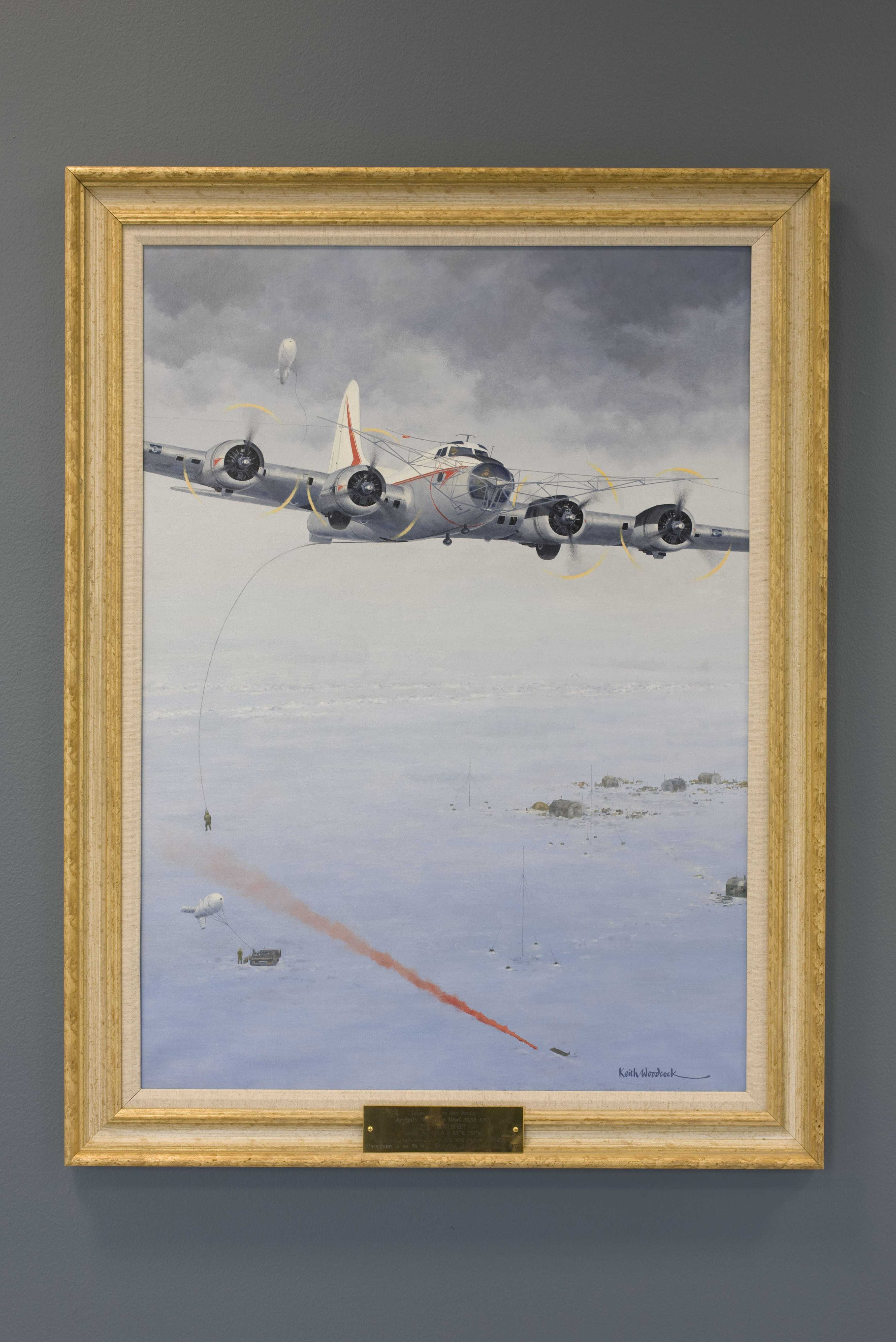Art Details

The 7-day mission in the Arctic yielded valuable intelligence on advanced Soviet technology. This painting is part of CIA’s Intelligence Art Gallery.
by Keith Woodcock
Oil on Canvas, 2007
Donated by Gar and Audrey Thorsrud
During the Cold War, the US and Soviet Union notoriously vied for technological advantage in thermonuclear weapons, advanced manned aircraft, intercontinental ballistic missiles, and satellites. Less well known were their competing efforts to study the Arctic for its scientific and military value.
In 1961, the prospect of obtaining firsthand information about Soviet technology arose when an abandoned Soviet research station in the high Arctic was sighted. The Office of Naval Research (ONR) decided to pursue this rare intelligence opportunity, and Project COLDFEET was born. Nearly a year later, as planning continued, a second abandoned site known as NP8 was found, but ONR funding had run out, so CIA agreed to take over the project. Within a month, CIA gave the go-ahead to Intermountain Aviation (an Agency proprietary headed by Garfield Thorsrud) and veteran contract pilots Connie Seigrist and Douglas Price – experts in agent exfiltration using a WWII-era B-17 “Flying Fortress” equipped with a state-of-the-art Fulton “Skyhook” aerial retrieval system.
On 28 May 1962, an experienced team aboard the Intermountain Aviation B-17 reached the NP8 drop site. Maj. James F. Smith, USAF, and Lt. (jg) Leonard A. LeSchack, USNR, parachuted down for a 72-hour exploration. They photographed the facility and collected 150 pounds of documents and samples of equipment left behind by the Soviets. Because of dense fog, the pickups began a day late, despite hazardous 30-knot surface winds and poor visibility. Flying at 125 knots, 425 feet above the ice, the B-17 first hooked and hoisted aboard a canvas bag filled with the intelligence “booty.” Next was LeSchack’s turn, which didn’t go as well when high winds dragged him forward on his stomach 300 feet across the ice before he was hooked incorrectly facing into the wind. He was able to correct his position before being hoisted in. Smith then positioned himself for the final pickup, struggling in the strong wind that began to drag him across the ice until he was able to catch an ice crack with his heels. Smith was pulled aboard and joined his team in celebrating the completed mission.
The painting depicts the B-17 successfully catching LeSchack while Smith waits at the NP8 pickup point marked with red smoke. The 7-day mission yielded valuable intelligence on Soviet advanced acoustical detection of under-ice submarines and Arctic anti-submarine warfare techniques, thanks to the persistence, courage, and resourcefulness of that small team of dedicated professionals who planned and executed this remarkable feat.
The painting’s unveiling at CIA Headquarters on 21 April 2008 and the ceremony honoring COLDFEET participants brought team members together for the first time in 46 years. Many of the family members who joined them had never been to CIA Headquarters, let alone heard of the contributions their relatives had made in an extraordinarily challenging Cold War mission.
Art Specs
106 cm x 80 cm
(H x W)
